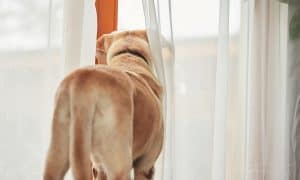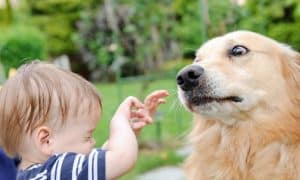“This post contains affiliate links, and I will be compensated if you make a purchase after clicking on my links.”
Watching your new puppy and your little one grow up together and form a lifelong bond is a beautiful thing, but managing two lively youngsters at once is no easy feat! Luckily this article is here to help, offering some practical advice on how to manage your puppy and toddler.
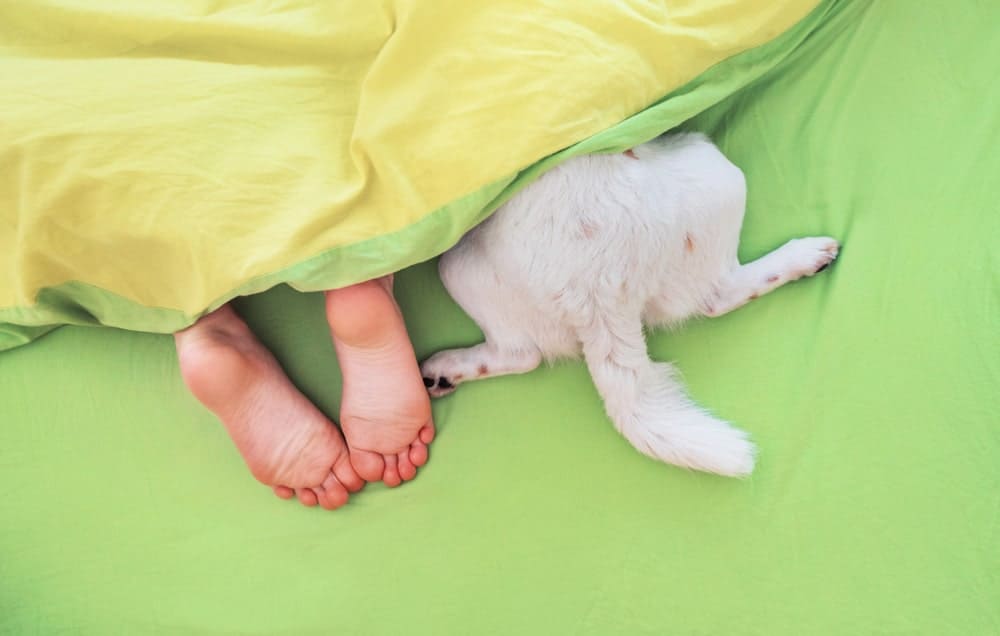
From precautionary interior design hacks to fostering a calm environment and discussing important safety advice, we’re here to offer a range of tips to ensure your dynamic duo are brought up in a safe, fun and harmonious environment that benefits the whole family.
Set some boundaries
Puppies and toddlers love to explore – it’s in their nature and is all part of them growing up and learning about the world around them. However, it’s essential to set boundaries for both toddler and pup to prioritise safety, as well as keep some order within your household.
With kids, the addition of stair gates can be a blessing for parents who want to confine their wanderings to certain areas of the home that are child-friendly – and these techniques can be used for your puppy, too. Depending on the size of your puppy, you may be able to use your child gates as physical barriers to keep them contained in one area – perfect for when you need some quiet time for your child’s afternoon nap.
It’s also a good idea to invest in a dog crate for your puppy as early as possible, not least this will provide a secure sanctuary for them to retreat to for a little down time, but it will also serve as a helpful training tool as they get more responsive to commands. As part of the crate integration, you should teach your pup and child to understand that this is a quiet and calm space just for the dog – ensuring the two parties respect this protocol to avoid any potential friction.
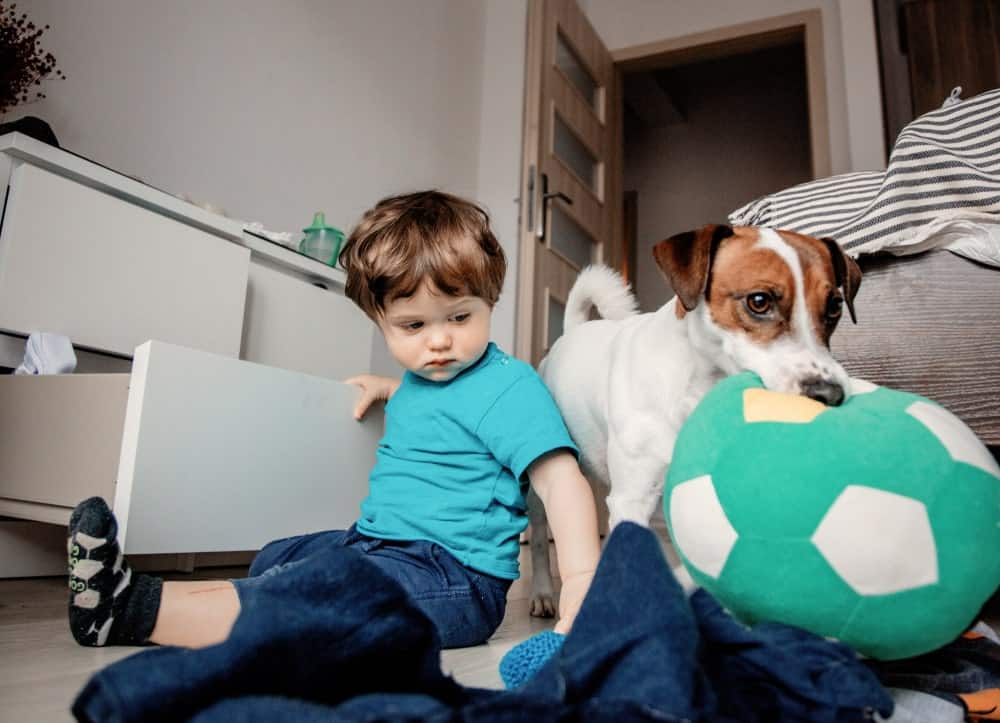
Combat the chew
While dogs and humans develop on different timescales, it’s inevitable that you’ll spot similarities between each of their milestones – and one that no parent or dog owner relishes is teething.
Thankfully, it’s unlikely you’ll find your toddler gnawing their way through a table leg or your favourite pair of shoes, but having suitable teething toys, gels and cooling foods to hand will help to ease the discomfort. For your little chewy pooch however, anything is fair game – and sometimes even the most unlikely items fall victim to their razor sharp teeth.
With this in mind, where possible, limit the amount of time that your pup is left on its own and able to get into mischief, but also consider storing away or upgrading pieces of furniture that could be a prime target. For example, opting for a stylish occasional table with metal legs instead of wood will make it a less attractive chew toy – and the easy wipe clean surface will mean you can stay on top of germs and prevent painful splinters from exposed wooden shards, too.
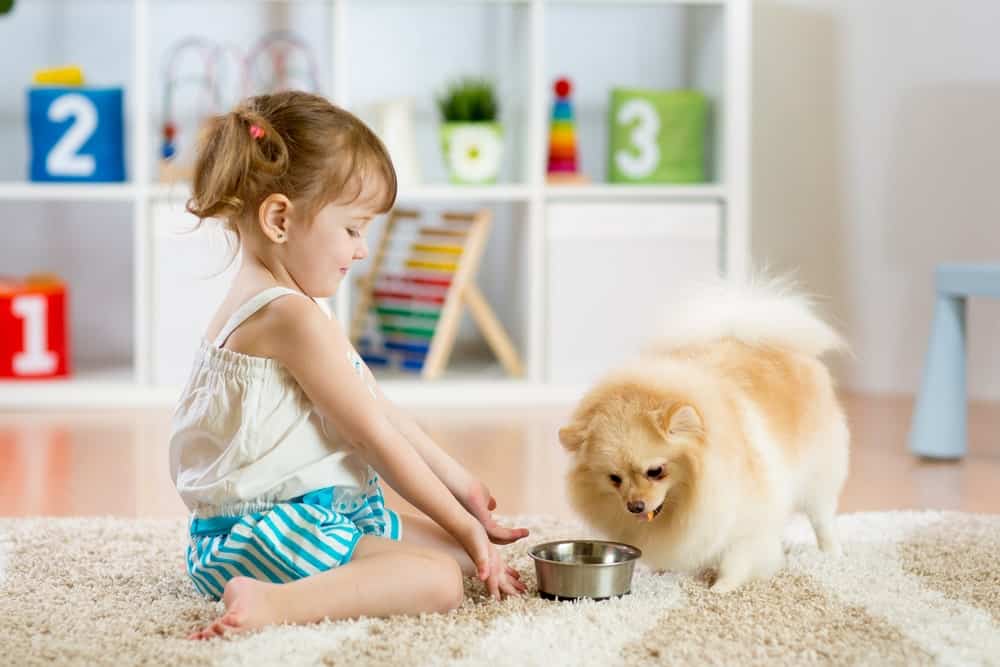
It also goes without saying that you should keep human and dog toys separate from each other, as to the untrained eye (or a curious toddler or puppy), there’s often little difference between them. Firstly, you don’t want your child to get poorly from sucking on a dog toy and secondly, you don’t want a poorly pup who’s been too enthusiastic with a child’s toy and ingested some of the pieces. If your little ones do like to play happily together, one way to ensure they stick to their own toys is to give your pooch a tasty treat like a Kong.
Safety first
Talking of pups and toddlers playing together, it is possible to happen without incident, but with figures in the United States suggesting over 50% of dog bite injuries involve children, you should always be aware there is a risk of your dog lashing out – even if unintentionally.
Whether it’s an unexpected high-pitched squeal of joy, a pulled tail or over-zealous cuddle, there may be times when your puppy finds your baby or toddler’s behavior frightening or possibly too exciting, which could cause them to react negatively or become a little boisterous in their mode of play.
From as early as possible try to teach both your pet and your child how to play together safely and the correct way to interact with each other. While your child may have the strength to pick up a small dog and give it a good cuddle, your puppy may not enjoy the smothering so monitor their time together and encourage them to play gently – separating them if things get a little rough.
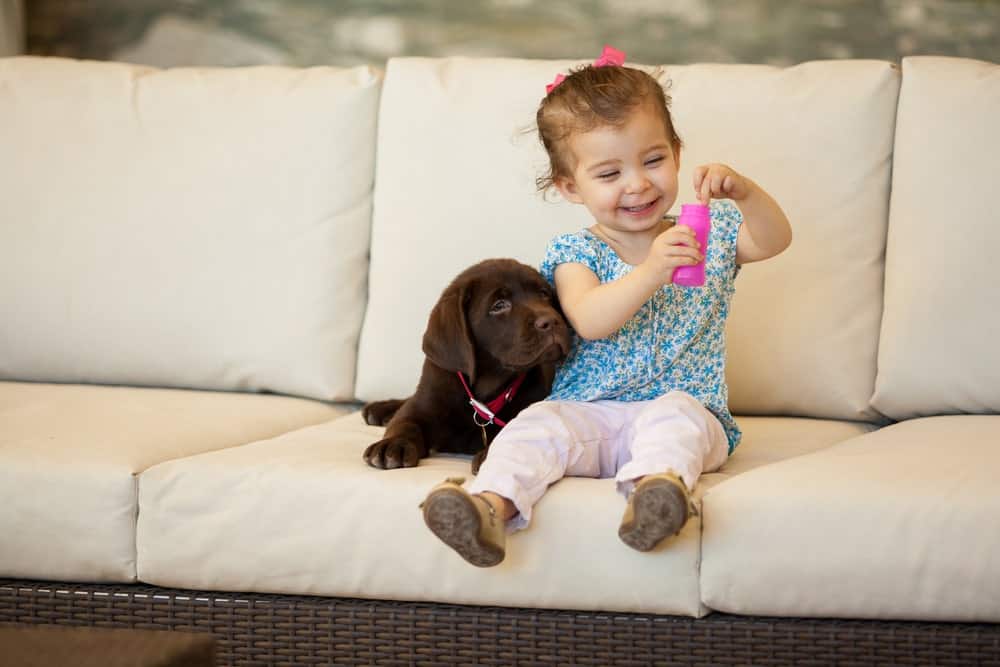
It’s also important for both pets and little ones to recognize when the other isn’t in the mood. For instance, if your dog’s resting after a long walk or eating, tell your child to leave them in peace or put them in separate rooms. Teaching your child to be considerate of your puppy from a young age will naturally influence their interactions with other dogs who may not be as placid and tolerant as their own furry friend. Find out other helpful hints on child and dog safety here.
To many, having a puppy and a child coexisting in one house at the same time may seem like too much of a handful, but for those who are undeterred, it can form a magical friendship and bond between the whole family. Of course, there’s no denying that caring for two little creatures is never going to be a walk in the park, but we hope with these tips, you’ll find managing double the trouble, no trouble at all.
Author bio: Angus Ponsford is the Director at Ponsford Ltd, an independent, family-run furniture retailer that boasts a huge selection to suit every style and budget.


